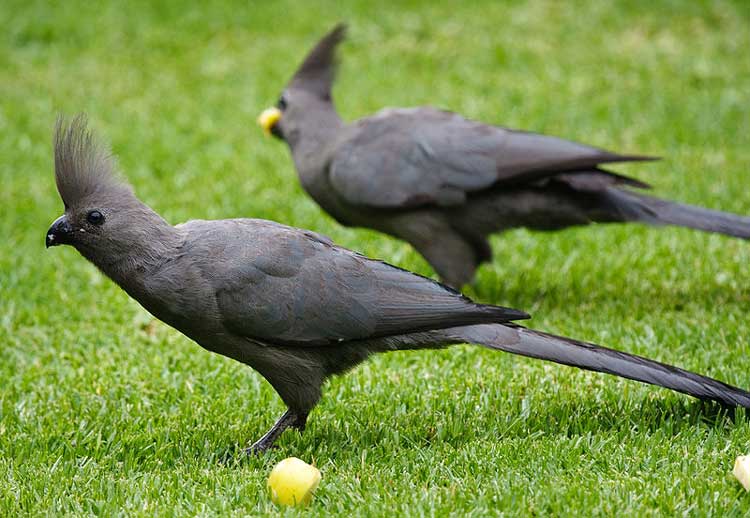Corythaixoides concolor (*) Cladus: Eukaryota Name Corythaixoides concolor (A. Smith, 1833) References * South African Quarterly Journal. (2) no.1 p.48
The Grey Go-away-bird (Corythaixoides concolor), also known as Grey Lourie, Grey Loerie, or Kwêvoël, is a southern African bird of uniform grey with black beak and strikingly pink gape. It is widespread in savanna woodland, a clumsy flier though extremely agile in clambering through tree crowns. It has a distinctive loud alarm call "quare", fancifully sounding like "Go-away". The crest is raised when excited. Its diet is mainly fruit (such as wild figs and berries), flowers and buds, leaves, termites and snails. Its habitat is dry open savanna woodlands, farms, parks, and suburban gardens, often near water. References 1. ^ BirdLife International (2004). Corythaixoides concolor. 2006. IUCN Red List of Threatened Species. IUCN 2006. www.iucnredlist.org. Retrieved on 30 May 2007. Source: Wikipedia, Wikispecies: All text is available under the terms of the GNU Free Documentation License |
|

